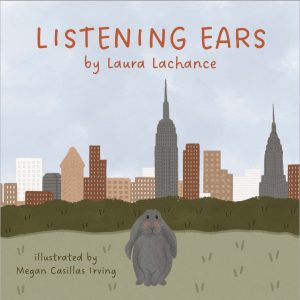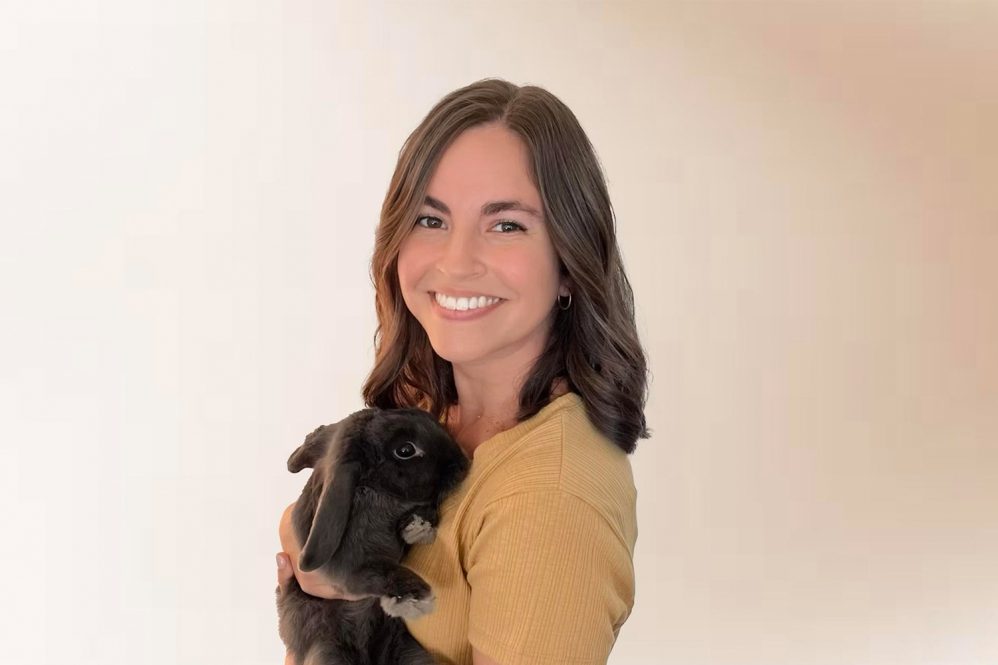Laura Lachance earned her master’s degree from UConn in speech and language pathology in 2016. Lachance is a speech pathologist at Brooklyn Technical High School in New York City. She also works with younger clients through her private practice, The Talk Shop. Her educational children’s book, “Listening Ears,” was published last year and aims to help children with their speech development. Lachance recently took some time to visit with UConn Today about her book.
What made you decide to write this book?

As a speech therapist, I am always looking for materials to use in my own sessions to work on early language skills. My goal was to create something that other speech providers and parents could use with their kids too. I typically come across picture cards and worksheets, but I wanted a way to work on these foundational skills that was much more interactive and story-based.
I wanted to write a book about nonverbal communications because one of my nieces has a rare genetic mutation, DDX3X syndrome, which can have severe impacts on physical, cognitive, and communication development. Some people who have this syndrome, including my niece, are nonverbal, so it was especially important for me to write an inclusive book that showed readers that you can communicate without words.
Also, and this is why I went into speech pathology in general, I was extremely shy growing up, so it took me a while to successfully communicate. So, I’ve always been drawn to helping other people find their voice, for whatever reason they are having difficulty.
What is the book about?
It’s a story about a bunny named Simon that lives in New York City, who needs to get to a magic show in Central Park. On each page readers use their “listening ears” to copy Simon’s gestures and actions to travel to the next New York landmark, like Grand Central Station, a Broadway show, and the Met Museum. The book ends with Simon in the magic show. The main character is based on my real pet bunny. I thought it would be fun to write a book about him having an adventure in New York City, where we live.
The book is perfect for children ages 2 to 5. If someone is struggling with learning language skills, then it could be used for those a bit older.
What types of nonverbal language can this book help with?
Facial expressions, body language, and carrying out actions. So, for example, pointing, clapping, and smiling – those are all early examples of functional nonverbal language. Typically, a child learns to imitate nonverbal gestures before they are able to imitate words, so the book helps with gaining that foundational skill. There’s also been a lot of research showing that toddlers who use more gestures tend to develop a larger vocabulary and have stronger language skills as they grow older. The book can be used with children with special needs – “late talkers,” as we call them – who have a language delay, and typically developing kids.
What was the writing process for this book like?
I first came up with 30 examples of early gestures and actions that are functional for communicating wants and needs. Then I created a narrative around those so that the child could learn to imitate the actions in a story-based context. I reached out to a graphic artist, Megan Casillas Irving, on social media. I was drawn to her illustration style and was so excited to see how she brought Simon and my favorite places in New York to life. “Listening Ears” is available on Amazon. It’s also for sale at Greenlight Bookstore in Brooklyn, one of my favorites.
Tell us about your time as a UConn graduate student.
UConn’s speech master’s program gave me a great foundation for my career. The program set me up with externships in medical and educational settings, like Connecticut Children’s Medical Center, so I was able to get a lot of hands-on experience.
Are you going to write another book?
I hope so! I would love to write more books using Simon that focus on different speech and language topics.



